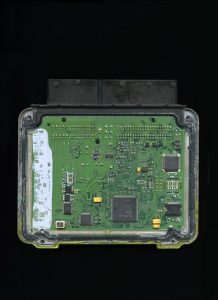Air taxis, which would carry from four to eight passengers on shorter rides between smaller, now-underused airports, could become available in the next three to four years. Following in the footsteps of several startups, Honda has developed an experimental jet-powered air taxi, now in flight testing.
After that, personal flying cars’ arrival will only be a matter of time.
Robin Haynes is working on the Skyblazer, it will look like a car — and actually drive on the road — as well as fly. With a push of a button, wings will fold out of the car’s sides (see below.)
![0827_skyblazer[1].jpg](http://www.we-make-money-not-art.com/xxx/0827_skyblazer%5B1%5D.jpg)
Harry Falk and his team managed to fly a portable helicopter, last fall. The prototype of Springtail should be finished in 18 months.
It will first be used by soldiers during battles within cities. Then, it should make its way into the civilian world.
![0827_millennium[1].jpg](http://www.we-make-money-not-art.com/xxx/0827_millennium%5B1%5D.jpg)
By then, the scientific community will have supplied some important technologies, like intuitive, easy-to-operate controls.
Thanks to special intelligent software, robot helicopters developed by Carnegie Mellon can already fly along a designated route and at some point, their on-board sensors and analytical software should be able to discern obstacles like wires, birds, trees and people. Then, human pilots might only need to turn the steering wheel or press the brakes, while their flying cars guide themselves.
Eventually, passengers might even be able to read the paper or eat breakfast while their flying car’s brain does all the work. University of Florida researchers are hoping to use a bunch of living neurons — located in a sealed dish on the ground — to wirelessly pilot a toy plane through the air.
Sensors on the plane would collect information about its surroundings and communicate it to the neurons, which then tell the plane to swerve away.
Although it’s is a long way off, the flying car is suddenly less the stuff of cartoons.
From Business Week, via Core 77.







